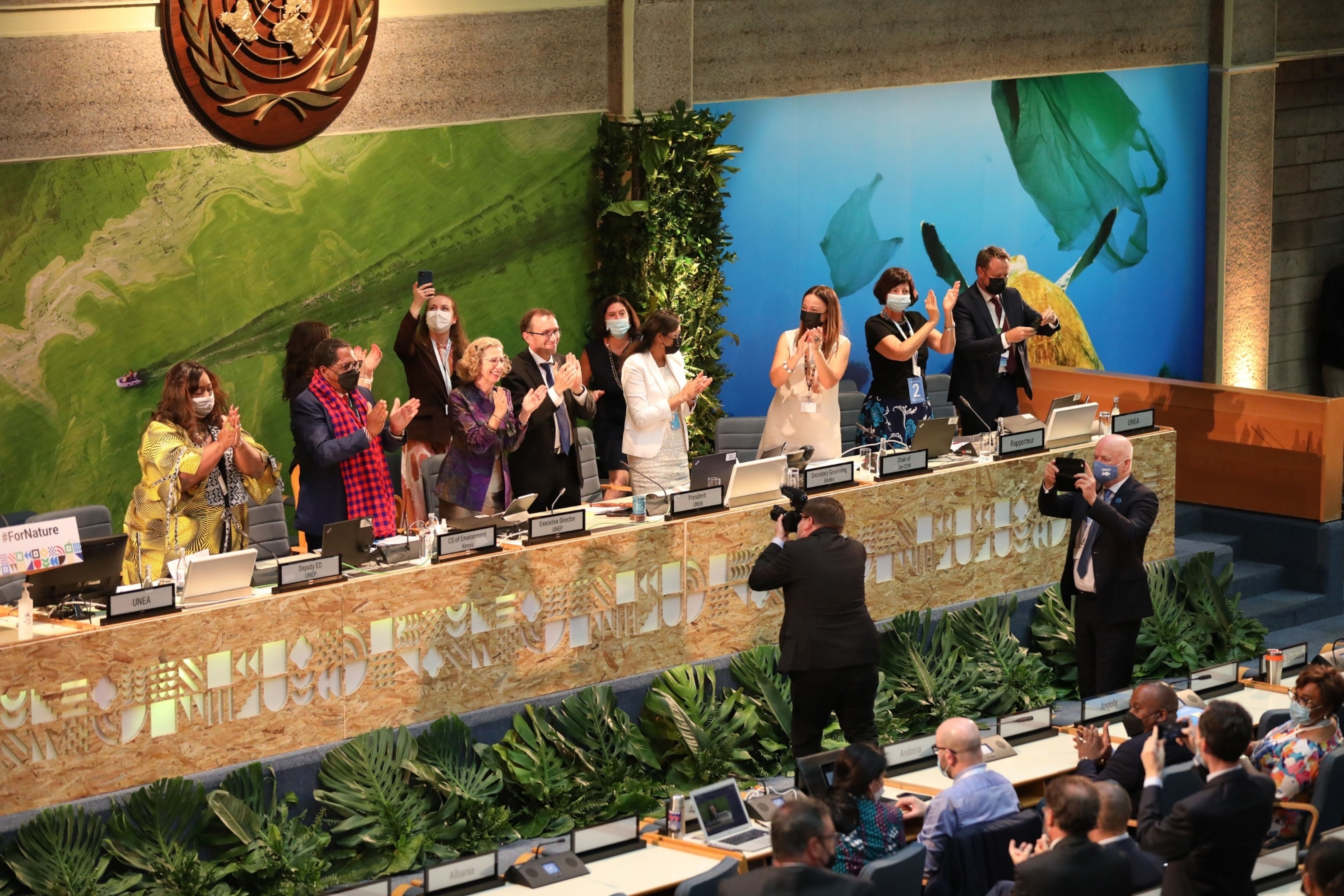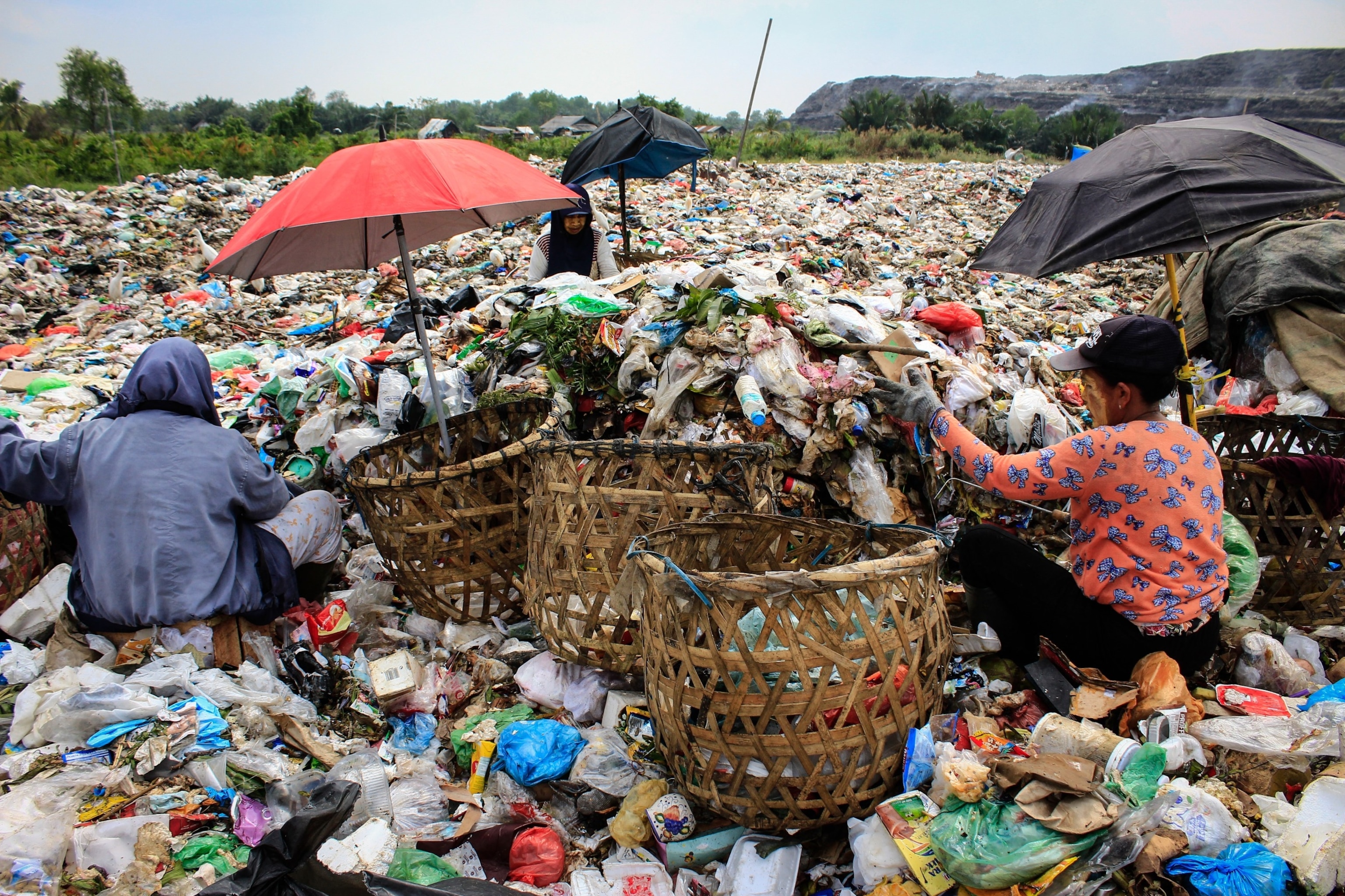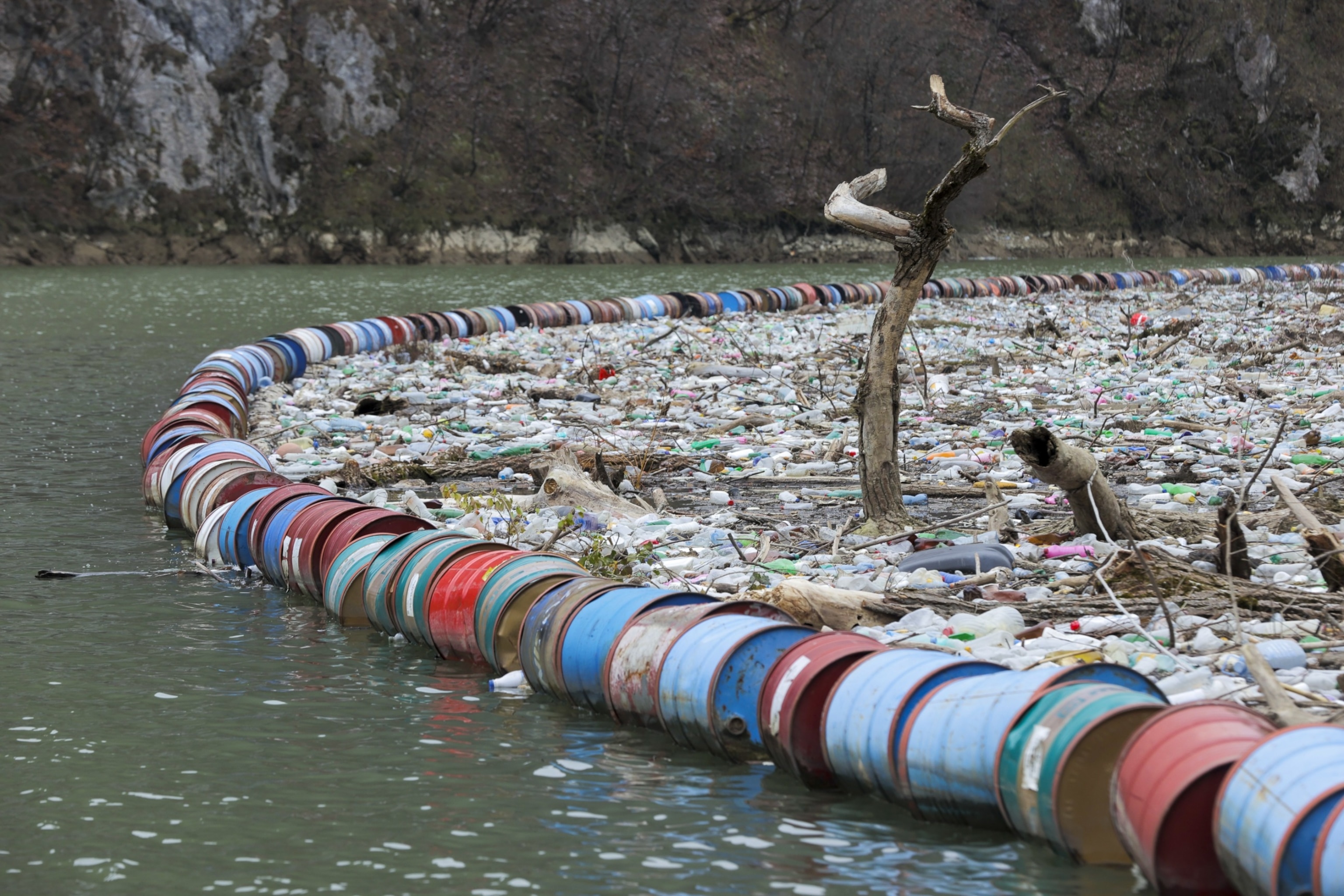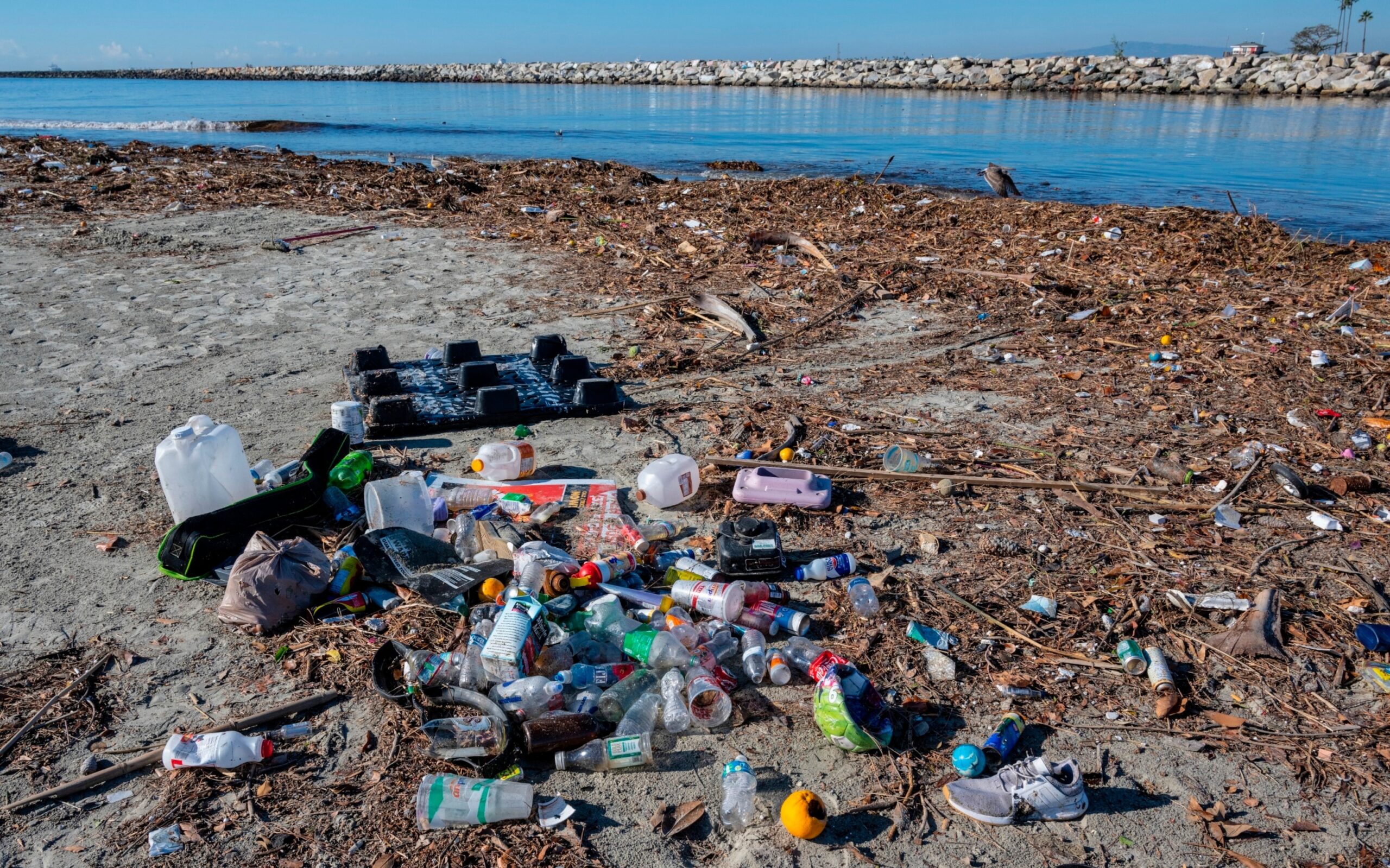ABC News is exploring solutions to issues related to climate change and the environment through the series “The Power of Us: People, Climate and Our Future.”
As the world’s climate crisis takes center stage on Earth Day 2024, negotiators from 175 countries will gather in Canada next week for the fourth round of negotiations on the United Nations Plastics Treaty.
The final round of major negotiations will take place in Ottawa, Canada, from April 23 to 29, with the treaty’s Intergovernmental Negotiating Committee (INC) coming together to draft a legally binding agreement by the end of 2024, according to the United Nations. global agreement
Negotiations begin immediately after Earth Day, Monday, April 22.
On December 13, 2022, in Seal Beach, California, plastic bottles and other garbage accumulated on the banks of the San Gabriel River just a few hundred yards from the Pacific Ocean.
Mark Reitmeier/Media News Group, Getty Images
“Global plastic production and consumption have grown exponentially since the 1950s and will increase by 70% by 2040 if business continues as usual,” INC said in a press release ahead of the negotiations.
“This requires a new, shared global vision that plastic pollution is not an option, coupled with a set of targets, policy tools and mechanisms that will guide and enable this transformation,” the committee report said.
The agreement, titled “Ending Plastic Pollution: Towards an International Legally Binding Instrument,” is expected to be finalized in Busan, South Korea, by the end of 2024.
INC previously held negotiations in Uruguay in December 2022, France in May 2023 and Kenya in November 2023.
What is the UN Plastics Treaty?
According to the intergovernmental organization, the United Nations Plastics Treaty will become a legally binding global agreement among 175 countries that will set out the actions and timetable needed to reduce the production and consumption of high-risk plastics.
To address the issue of “plastic’s entire life cycle, from source to ocean,” the United Nations will convene heads of state, environment ministers and other representatives of UN member states to reach an agreement on the treaty.

On March 2, 2022, at the closing meeting of the resumed fifth session of the United Nations Environment Assembly in Nairobi, Kenya, delegates celebrated the adoption of a resolution to end plastic pollution.
Dong Jianghui/Xinhua News Agency/Getty Images
According to the UN resolution released after the negotiations in Kenya, some of the points that the treaty may include are:
- Determine where the life cycle of plastic production begins and potentially limit the production of primary plastic polymers.
- The “zero draft” of the Plastics Treaty aims to better promote the sustainable production of plastics for packaging through product design and environmentally sound waste management
- In response to the world’s ocean issues, the treaty may aim to promote national and international cooperation on plastic reduction measures against pollution in the marine environment.
- As appropriate, designate country reporting to the INC and evaluate the progress and effectiveness of the agreement.
- Launch a multi-stakeholder action agenda that includes the private sector to promote collaboration at local, national, regional and global levels.
- The treaty may aim to specify arrangements for capacity building and technical assistance, mutually agreed terms for technology transfer and financial assistance.
These key points may not be in the final treaty, but they are areas of interest during the negotiation process.
Why plastic is a problem
According to the United Nations Environment Program (UNEP), plastic production has grown faster than any other man-made material since the 1970s.
The United Nations reports that about 36% of all plastic produced is used for packaging, including single-use plastic used in food and drink containers, noting that about 85% of single-use products end up in landfills or as unregulated waste.
The United Nations reports that if no action is taken to reduce the production of single-use plastics, global production is expected to reach 1.1 billion tons by 2050.

Waste pickers collect plastic waste to sell to recycling centers at a landfill in Medan, North Sumatra, on March 27, 2024.
Kartik Byma/AFP via Getty Images
According to the United Nations, approximately 98% of single-use plastic products are produced from fossil fuels, and by 2040, fossil fuel-based plastics are expected to grow to account for 19% of the global carbon budget in 2040.
“Plastic is everywhere, not just in ecosystems in the atmosphere, but in the food we eat, the water we drink, and even inside our bodies,” said Renee Sharp, plastic and petrochemical advocacy director at Natural Resources Conservation. ) the Natural Resources Defense Council (NRDC) said in a webinar on April 17.
Sharp said serious human health problems associated with plastic include cancer, diabetes, heart disease, obesity, respiratory problems, reproductive and hormonal problems, asthma and more.
According to a research report released by the PlastChem Project in March, plastics may contain any mixture of more than 16,000 different chemical substances, of which at least 4,200 are “highly hazardous to human and environmental health.”
“The science around plastics and the health of the chemicals in plastics shows that a collective global response is needed,” Sharp said. “This is not a problem that we can solve country by country, country by country – we really have to think about this internationally. question.”
What experts say about the treaty
Inger Andersen, chief executive of the United Nations Environment Program, said the agreement is the most important international multilateral environmental agreement after the Paris climate agreement.
“This is insurance for this generation and future generations, so they can live with plastic rather than being doomed by it,” Anderson said in a press release after the Kenya treaty talks.

On January 11, 2024, a large amount of garbage and plastic waste accumulated on the surface of the Drina River due to rainfall in Sarajevo, Bosnia and Herzegovina.
Samir Chodamovich/Anadolu, Getty Images
A Greenpeace International survey released in April found that 82% of respondents from 19 different countries supported reducing plastic production to stop plastic pollution, and 90% supported abandoning single-use plastic packaging.
Graham Forbes, head of the Greenpeace delegation to the Global Plastics Treaty negotiations, believes that “the vast majority of people want a Global Plastics Treaty that cuts plastic production and ends single-use plastics. Now the world leader It’s time for people to listen and respond to this situation.
Benny Mermans, president of the World Plastics Council, said in an April 15 press release that an “effective global agreement” is needed to “incentivize the billions of dollars in additional investment needed to address plastic pollution.”
“Our members are investing billions of dollars in infrastructure to expand the supply of recycled plastics so that they prevent waste plastics from entering the environment as waste, landfill or incineration and instead become new plastics,” Mermans said.
#plastics #treaty #aims #solve #pollution #crisis
Image Source : abcnews.go.com
